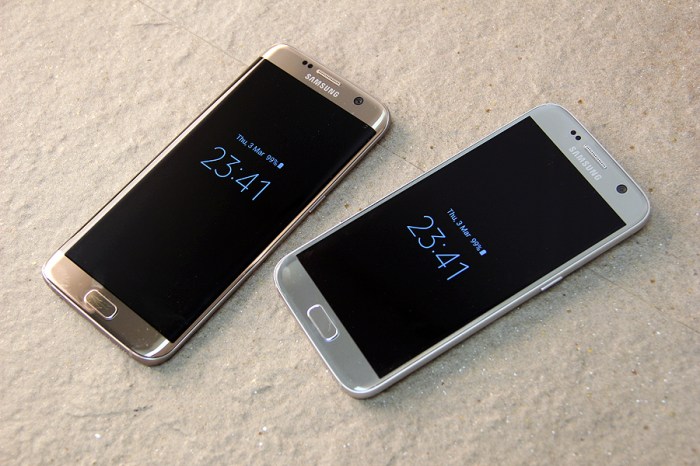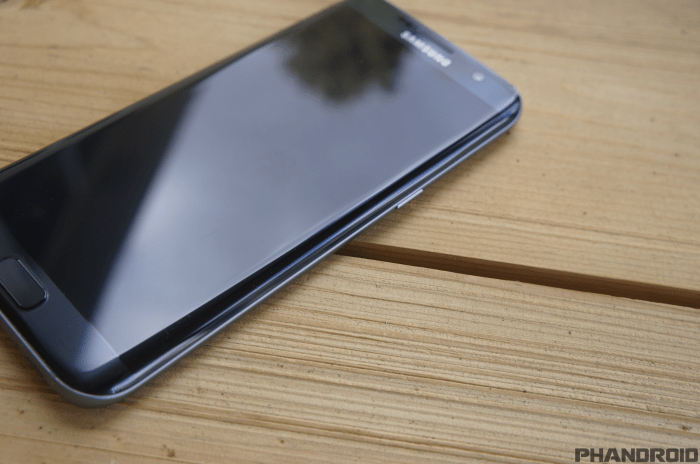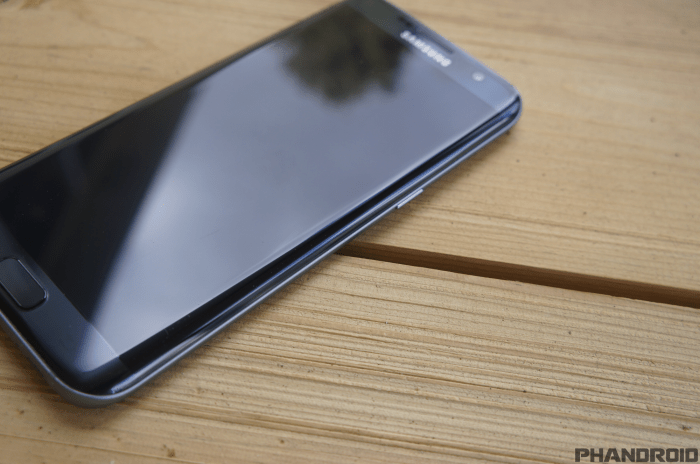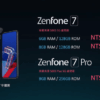Galaxy s7 and s7 edge only support quick charge 20 coming short latest standard – Galaxy S7 and S7 Edge only support Quick Charge 2.0, coming short of the latest charging standards. This means users experience slower charging speeds compared to newer models. The evolution of charging technology, from older standards to Quick Charge 2.0 and beyond, will be explored, along with the specific features and limitations of the S7/S7 Edge charging capabilities.
This article delves into the historical context of charging standards, highlighting the transition from older technologies to Quick Charge 2.0. We’ll examine the Galaxy S7/S7 Edge’s charging limitations, contrasting them with more modern standards. Finally, we’ll analyze the implications for users and manufacturers, considering the trade-offs between older and newer technologies, and how the current mobile charging landscape factors in.
Historical Context of Charging Standards
The quest for faster mobile charging has been a continuous evolution, driven by the ever-increasing demands of our digital lives. From the rudimentary beginnings of early charging standards to the sophisticated Quick Charge 2.0 technology, the journey reflects a relentless pursuit of efficiency and speed. This exploration delves into the history of these charging standards, highlighting the key advancements and their impact on the mobile phone market.Early mobile phones relied on relatively slow charging methods, often using standard USB connections.
This resulted in lengthy charging times, which was a significant inconvenience for users. The need for faster charging solutions became increasingly apparent as battery capacities increased and user expectations for immediate device readiness grew.
Timeline of Charging Standards
The evolution of charging standards has been a gradual progression from basic technologies to more advanced ones. This timeline illustrates the key milestones in the development of mobile charging solutions:
- Early USB Charging: The initial USB standard, while providing a common interface, offered limited charging capabilities, leading to significantly long charging times. This was the starting point for the search for faster charging solutions.
- Various Proprietary Charging Standards: Different manufacturers began developing their own proprietary charging solutions. These approaches, though faster than basic USB, were not universally compatible and often created compatibility issues.
- Quick Charge 1.0: This represented a notable step towards faster charging. Quick Charge 1.0 introduced a more efficient charging protocol, significantly reducing charging times compared to earlier standards. It used adaptive voltage and current regulation to achieve faster charging, although it didn’t reach the same speed as later iterations.
- Quick Charge 2.0: Quick Charge 2.0 built upon the foundation of Quick Charge 1.0, further optimizing the charging process. It incorporated advanced algorithms and power delivery protocols to increase charging speed even more. This became a significant advancement in the mobile charging industry.
Features and Benefits of Quick Charge 2.0
Quick Charge 2.0 presented several advantages over earlier charging standards. It optimized the charging process by dynamically adjusting the voltage and current supplied to the device. This allowed for faster charging without exceeding safe operating limits. The core benefit was the significant reduction in charging time without compromising device safety.
Reasons for Adoption of Quick Charge 2.0
Manufacturers adopted Quick Charge 2.0 due to its ability to deliver faster charging speeds. This led to a more user-friendly experience, allowing consumers to quickly recharge their devices, which was a key selling point. The reduced charging time also enhanced the appeal of devices and contributed to market competitiveness.
Impact on the Mobile Phone Market
Quick Charge 2.0 had a significant impact on the mobile phone market, driving demand for faster charging solutions. It encouraged competition among manufacturers, resulting in a wider range of devices with faster charging capabilities. The reduced charging time positively impacted user experience and potentially influenced purchase decisions.
Comparison of Charging Speeds
| Charging Standard | Typical Charging Speed (hours) | Notes |
|---|---|---|
| Basic USB | > 2 hours | Slowest charging speed. |
| Quick Charge 1.0 | ~1.5 hours | Significant improvement over basic USB. |
| Quick Charge 2.0 | ~1 hour | Further reduction in charging time. |
| USB Power Delivery | Variable | More modern, flexible standard offering high speeds. |
The table above provides a general comparison. Charging speeds can vary based on device models and specific implementation.
While the Galaxy S7 and S7 Edge are cool phones, their support for Quick Charge 2.0 feels a bit outdated compared to the latest standards. This outdated charging tech is a shame, especially when you consider the impressive advancements in AI and deepfake technology, like the deepfake roundtable impersonation collider featuring Tom Cruise, Jeff Goldblum, and Robert Downey Jr.
This fascinating deepfake roundtable highlights the rapid evolution of technology, making the limited charging capabilities of older phones like the S7 and S7 Edge seem even more dated. It’s a stark contrast between the cutting-edge in digital creation and the relatively slower evolution of phone charging technology.
Galaxy S7/S7 Edge Charging Limitations: Galaxy S7 And S7 Edge Only Support Quick Charge 20 Coming Short Latest Standard

The Galaxy S7 and S7 Edge, while popular devices, faced limitations in their charging capabilities compared to subsequent models. This was primarily due to the technology choices made at the time of their design and release. Understanding these limitations helps contextualize the evolution of mobile phone charging technology.
Charging Capabilities of the Galaxy S7 and S7 Edge
The Galaxy S7 and S7 Edge supported Quick Charge 2.0, a relatively mature fast-charging technology. This technology provided a noticeable speed improvement over standard charging, but it fell short of the capabilities introduced with later iterations of fast-charging protocols.
Charging Technology Supported
The primary charging technology supported by the Galaxy S7 and S7 Edge was Quick Charge 2.0. This standard enabled faster charging than traditional charging methods, but it was not as advanced as the subsequent iterations of Quick Charge. This limitation meant the phones couldn’t leverage the increased charging speeds of newer standards.
Reasons for Lack of Support for Newer Standards
Several design choices contributed to the Galaxy S7/S7 Edge’s inability to support Quick Charge 3.0 or 4.0. These newer standards often required more advanced hardware components within the phone, including updated power management ICs and charging circuitry. The S7/S7 Edge design did not include these components. Furthermore, the overall battery design and power delivery architecture may not have been optimized for these faster charging speeds.
Comparison of Charging Speeds
| Device | Charging Standard | Charging Time (Estimated) |
|---|---|---|
| Galaxy S7/S7 Edge | Quick Charge 2.0 | Approximately 1.5-2 hours for a full charge |
| Galaxy S8/S8+ | Quick Charge 2.0/3.0 | Faster than S7/S7 Edge, but still dependent on the particular model |
| Galaxy S9/S9+ | Quick Charge 2.0/3.0 | Further improved charging speed compared to previous models |
| Galaxy S10/S10+ | Fast Wireless Charging (depending on model), Quick Charge 2.0/3.0 | Charging speed varied based on model and conditions |
The table illustrates the approximate charging time difference between the S7/S7 Edge and later models. Note that these are estimations, and actual charging times can vary based on various factors.
Quick Charge 2.0 in the Context of Newer Standards

Quick Charge 2.0, a fast charging technology introduced by Qualcomm, was a significant advancement in mobile charging when it debuted. It aimed to reduce charging times compared to older standards, but its limitations became apparent as the mobile industry evolved. This discussion will explore Quick Charge 2.0’s place in the broader context of charging technologies, its strengths and weaknesses, and how subsequent standards built upon its foundations.Quick Charge 2.0 represented a step forward in fast charging by utilizing a more sophisticated approach to voltage and current delivery than older standards.
However, its efficiency and compatibility with various devices had inherent limitations. The evolution of battery technology and charging protocols pushed the industry towards even faster and more efficient charging solutions.
Comparison with More Recent Charging Technologies
Quick Charge 2.0, while an improvement, was superseded by more advanced technologies like Quick Charge 3.0 and 4.0. These newer standards focused on optimized power delivery, improved charging safety, and enhanced compatibility with a wider range of devices. Quick Charge 2.0’s limitations included potentially higher charging temperatures and slightly lower efficiency compared to newer iterations. The newer protocols allowed for more dynamic and adaptive charging profiles, resulting in faster charging times and improved battery longevity.
Advantages of Quick Charge 2.0
Quick Charge 2.0 offered a noticeable improvement over older charging standards. Its primary advantage was a significant reduction in charging times, compared to the previous standard, often allowing users to charge their devices more quickly. This was particularly appealing to users with busy schedules.
Disadvantages of Quick Charge 2.0, Galaxy s7 and s7 edge only support quick charge 20 coming short latest standard
Quick Charge 2.0 had limitations. The technology wasn’t universally compatible with all devices, requiring specific hardware support on both the charger and the phone. Additionally, it sometimes struggled to maintain optimal charging speeds when the battery was close to full, resulting in longer charging times in the later stages.
Evolution of Charging Technology Beyond Quick Charge 2.0
The evolution of charging technology has moved beyond Quick Charge 2.0 to more advanced standards, including Quick Charge 3.0, 4.0, and beyond. These newer standards often address the limitations of Quick Charge 2.0, such as better compatibility and more efficient power delivery. Modern standards like USB Power Delivery (USB PD) also offer significantly faster and more versatile charging capabilities, allowing for higher power delivery and greater flexibility in charging scenarios.
Impact on Battery Life and Charging Time
The impact of charging standards on battery life and charging time is undeniable. Newer standards, such as Quick Charge 3.0 and 4.0, generally provide faster charging times with minimal impact on battery life when used responsibly and with compatible devices. Over time, optimized charging protocols contribute to better battery health. The evolution of charging technology emphasizes the importance of proper charging practices, including using certified chargers and avoiding excessive charging to prevent long-term battery damage.
Key Differences Between Quick Charge 2.0 and Quick Charge 3.0/4.0
| Feature | Quick Charge 2.0 | Quick Charge 3.0/4.0 |
|---|---|---|
| Charging Speed | Faster than older standards, but slower than later iterations. | Significantly faster charging times, often exceeding Quick Charge 2.0 by a considerable margin. |
| Compatibility | Limited compatibility with certain devices and chargers. | Improved compatibility with a wider range of devices and chargers. |
| Efficiency | Generally less efficient than later standards. | Higher efficiency in power delivery, minimizing wasted energy. |
| Safety | Potentially higher charging temperatures compared to later standards. | Enhanced safety measures to prevent overheating and battery damage. |
Implications for Users and Manufacturers
The Galaxy S7 and S7 Edge, while revolutionary devices in their time, are now facing the challenge of outdated charging technology. Limited support for newer Quick Charge standards presents a significant contrast to the rapidly evolving charging landscape, impacting both user experience and manufacturer strategies. This section delves into the implications of this disparity.
Impact on User Experience
The experience of using a device with Quick Charge 2.0 can differ significantly from one using more modern charging protocols. Users accustomed to faster charging speeds may find the S7/S7 Edge’s charging times frustrating. This can be particularly noticeable in situations where rapid charging is crucial, such as when running low on battery during a busy day. For example, someone needing to charge their phone quickly before an important meeting might find the S7’s charging rate insufficient, potentially leading to a negative user experience.
Implications for Manufacturers
Manufacturers face a complex dilemma when supporting older models. Maintaining compatibility with older standards can create inefficiencies in terms of resource allocation. Resources devoted to supporting Quick Charge 2.0 could be redirected to newer technologies, potentially improving the development and production of future devices. Furthermore, limited support for newer charging standards might hinder the device’s future appeal.
The declining market share of devices supporting outdated charging standards is a crucial factor that manufacturers must consider in their product strategies.
User Experience Issues with Older Standards
Supporting older charging standards can lead to several user experience issues. Longer charging times, as compared to newer models, can be a significant source of frustration. This is exacerbated by the increasing demands for fast, convenient charging in today’s mobile-centric world. Limited compatibility with newer accessories, such as fast-charging power banks, can further compound the issue. The user experience can be negatively impacted by a lack of seamless integration with modern charging infrastructure.
While the Galaxy S7 and S7 edge are cool phones, their limited Quick Charge 20 support is a bit of a letdown, especially compared to the latest standards. It’s a shame, considering how many other features are great. Speaking of cool tech, have you seen the Sphero BB-8 toy watch, Force Awakens with you? sphero bb8 toy watch force awakens with you ?
It’s pretty neat. But getting back to the phones, that Quick Charge 20 limitation really does hold the S7 and S7 edge back in the charging department.
Market Strategies for Addressing Older Models
Manufacturers need to strategize to address the limitations of older models while also catering to their existing user base. One approach is to provide educational resources outlining the limitations of Quick Charge 2.0 compared to newer standards. Manufacturers could also consider releasing software updates to optimize battery management for these devices, maximizing the limited capabilities of Quick Charge 2.0.
Furthermore, manufacturers can highlight the other advantages of the device, like superior camera quality or processor performance, to mitigate the frustration caused by slower charging speeds.
Comparison of Consumer Satisfaction
| Charging Standard | Potential Consumer Satisfaction (Qualitative) |
|---|---|
| Quick Charge 2.0 (e.g., Galaxy S7/S7 Edge) | Potentially lower satisfaction due to longer charging times and incompatibility with modern charging accessories; positive user experiences may depend on individual charging habits and expectations. |
| Newer Standards (e.g., Quick Charge 3.0+) | Higher satisfaction due to faster charging times and wider compatibility with modern charging accessories; positive user experience is more likely. |
This table provides a qualitative comparison, highlighting the potential differences in consumer satisfaction based on the charging standard. It’s important to note that consumer satisfaction is a complex metric influenced by many factors beyond just charging speed.
Technical Specifications and Design Considerations
The Galaxy S7 and S7 Edge, while groundbreaking phones in their time, showcased a charging technology that, in hindsight, reveals some design trade-offs. Quick Charge 2.0, the standard adopted, represents a significant step forward in mobile charging, but it also presents limitations compared to more modern standards. Understanding these specifications, design considerations, and limitations provides context for the evolution of mobile charging technology.Quick Charge 2.0 was designed to deliver faster charging speeds than previous standards.
Its core function revolved around optimizing the charging process for improved efficiency and reduced charging times. The design considerations emphasized a balance between speed, safety, and power consumption. This balancing act, however, was inevitably influenced by the existing battery technology available at the time.
Key Technical Specifications of Quick Charge 2.0
Quick Charge 2.0 primarily focused on optimizing the charging current and voltage delivered to the device’s battery. This allowed for a more rapid transfer of energy compared to older standards. The protocol’s intelligence lay in its ability to dynamically adjust charging parameters based on the battery’s temperature and charge level, improving safety and efficiency. This dynamic adjustment is crucial to prevent damage to the battery.
Design Considerations for Quick Charge 2.0
The design considerations for Quick Charge 2.0 were driven by the need for faster charging without compromising battery safety. One key consideration was the optimization of the charging circuitry within the phone. This involved designing more efficient power converters and controllers. The technology also needed to ensure compatibility with a range of different devices and charging accessories.
Limitations of Quick Charge 2.0
Despite its advancements, Quick Charge 2.0 had certain limitations. One significant limitation was its inability to achieve ultra-fast charging speeds possible with more recent standards. The protocol’s effectiveness also depended on the compatibility between the phone, charger, and the charging cable. A mismatch could lead to slower charging speeds or even safety issues.
Role of Battery Technology in Supporting Quick Charge 2.0
The battery technology of the time played a crucial role in supporting Quick Charge 2.0. Lithium-ion batteries, while capable of high-energy density, also had inherent limitations in terms of charging rate. The design of the batteries needed to be optimized for handling the increased charging currents without overheating or causing damage. The battery chemistry and its internal resistance were crucial factors influencing the effectiveness of Quick Charge 2.0.
It’s a little frustrating that the Galaxy S7 and S7 Edge only support Quick Charge 20, considering how much the latest standards have evolved. Meanwhile, it’s interesting to see how events like Yelp halting reviews at the McDonald’s Trump visited over the weekend here are impacting public perception and online discourse. Ultimately, the limitations of the older Galaxy models still feel a bit outdated in the face of modern charging technology.
Comparison of Technical Specifications
| Feature | Quick Charge 2.0 | Quick Charge 3.0+ | USB Power Delivery (PD) 3.0+ |
|---|---|---|---|
| Maximum Input Voltage (V) | 9 | 11 | 20 |
| Maximum Input Current (A) | 2 | 4 | 100+ |
| Charging Speed | Faster than previous standards but slower than later ones | Significantly faster | Fastest |
| Charging Protocol | Dynamic adjustment of voltage and current | More sophisticated dynamic adjustment | Highly adaptive, supports various voltages and currents |
This table illustrates the progressive advancements in charging standards, showing a clear trend towards higher power delivery and more sophisticated protocols.
Current Mobile Charging Landscape
The mobile charging landscape is in constant evolution, driven by the insatiable demand for longer battery life and faster charging speeds. The transition from the relatively slow charging standards of the past to the rapid, wireless options of today reflects this demand. The introduction of new technologies necessitates a reevaluation of the strengths and weaknesses of both wired and wireless charging methods.The current mobile charging landscape is characterized by a fierce competition between wired and wireless technologies, with each method boasting unique advantages and disadvantages.
This complex interplay of options forces users and manufacturers to carefully weigh the benefits of speed, convenience, and design aesthetics. The prevalence of wireless charging and the continuing evolution of wired solutions highlight the dynamic nature of this sector.
Current Trends in Mobile Charging Technology
The quest for faster and more convenient charging methods continues to drive innovation in mobile charging technology. We’re seeing a shift towards higher charging power, particularly with the rise of 100W and 120W wired charging solutions, promising significantly faster charging times. Wireless charging is also rapidly evolving, incorporating more advanced charging coils and higher power transfer capabilities. These developments are transforming how users interact with their devices, enabling them to spend less time plugged in and more time using their phones.
Importance of Wireless Charging in the Current Market
Wireless charging has gained substantial traction in the mobile market. Its convenience, eliminating the need for physical cables, makes it an attractive option for users. The sleek and clutter-free aesthetic appeal of wireless charging pads is a key driver for its adoption. The ability to charge devices while they’re being used is also a major advantage. This trend is particularly pronounced in the burgeoning smart home and wearables market.
Different Types of Wireless Charging
Various wireless charging standards exist, each with its own characteristics. Inductive charging, the most common type, utilizes electromagnetic induction to transfer energy wirelessly. Resonant inductive charging, a more advanced variant, offers higher power transfer capabilities. The specifications for each standard vary significantly, and this variation is reflected in the charging speeds and efficiency they offer.
Advantages and Disadvantages of Various Wireless Charging Methods
Inductive charging, the most widely adopted method, is generally simple to implement and cost-effective. However, its power transfer efficiency is relatively low, and the charging range is limited. Resonant inductive charging, while offering higher power transfer and longer charging distances, is more complex to implement and often more expensive. The efficiency of wireless charging, measured in the percentage of input power converted to output power, varies greatly between the methods.
Comparison of Wired and Wireless Charging Methods
| Feature | Wired Charging | Wireless Charging |
|---|---|---|
| Speed | Generally faster for high-power charging | Slower than wired charging, but getting faster |
| Convenience | Requires physical connection | Convenient, no cables required |
| Design Aesthetics | Can be less aesthetically pleasing | Can offer a cleaner, more minimalist design |
| Efficiency | Generally more efficient for higher-power solutions | Efficiency varies by method and power level |
| Cost | Generally lower cost for chargers | Can be more expensive, especially for high-power solutions |
| Charging while using device | Not possible | Possible, depending on device and charger |
The table above highlights the contrasting characteristics of wired and wireless charging methods. Users must carefully consider their priorities and needs to choose the best charging solution for their devices. The rapid advancements in wireless charging technology, however, are increasingly making it a viable alternative to traditional wired solutions.
Closing Notes
In conclusion, the Galaxy S7 and S7 Edge, while popular devices, are constrained by their Quick Charge 2.0 support, placing them at a disadvantage in today’s fast-charging mobile market. This analysis of the charging capabilities reveals the significant evolution in charging technology, emphasizing the trade-offs between older and newer standards. Understanding these limitations is crucial for both users and manufacturers, especially in the context of the ever-changing landscape of mobile charging.









